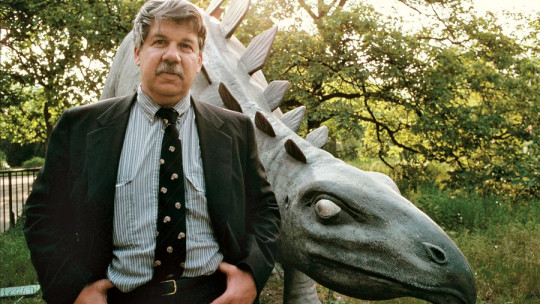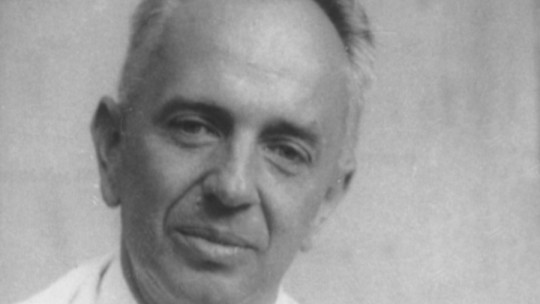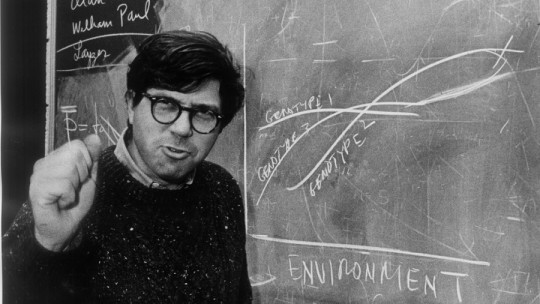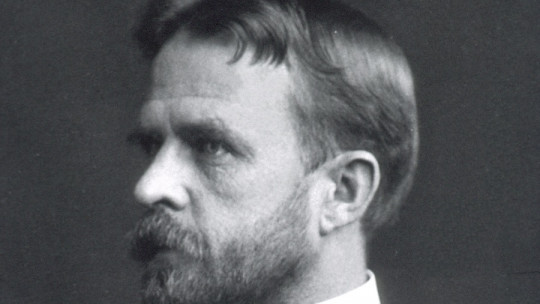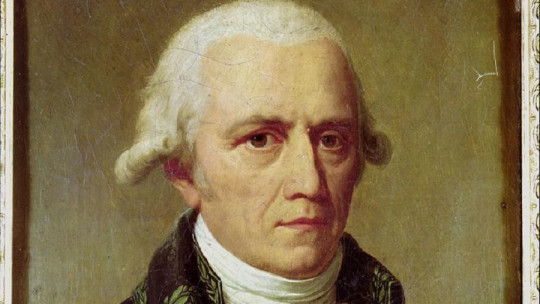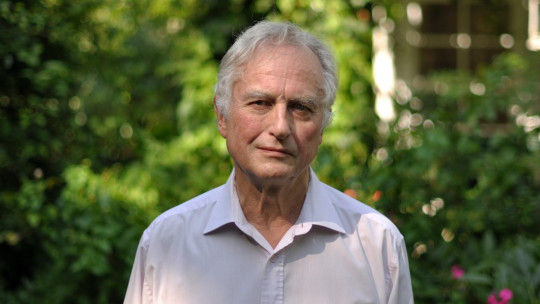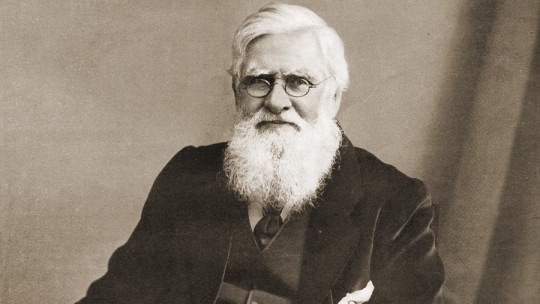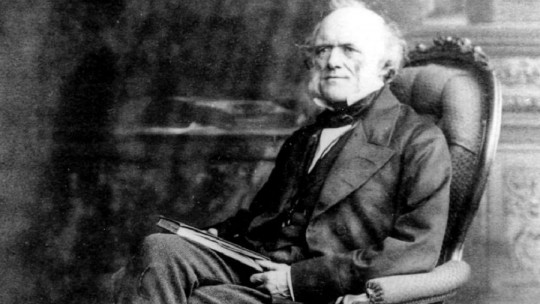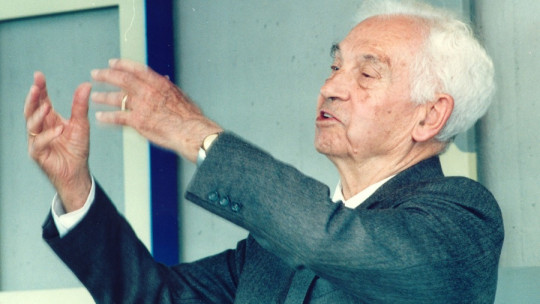
Ernst Mayr was a great systematic naturalist and ornithologist, known for having contributed to the synthetic theory of evolution and having given a definition of what species are that adapts to the idea of fertile hybridization.
He was a great connoisseur of the work of Charles Darwin and Theodosius Dobzhansky, which allowed him to give a genetic perspective to evolutionary theory.
Mayr fought for the recognition of biology as an autonomous science independent of the rest of the natural sciences, demonstrated by his extensive research career that lasted 80 years and resulted in numerous books and articles. Here we will see a summary of his life through a biography of Ernst Mayr
Brief biography of Ernst Mayr
Ernst Walter Mayr was born on July 5, 1904 in Kempten, Bavaria, Germany, being the second child of the marriage between Dr. Otto Mayr and Helene Pusinelli. In his family there was always a great interest in nature and Dr. Mayr used to take his children to the countryside to observe nature, something that had a positive impact on the young Ernst Mayr.
Following family tradition He studied Medicine at the University of Greifswald and, after graduating in 1925, he went to Berlin to pursue a doctorate in Ornithology a degree he obtained in 1926. In the German capital he would also have the opportunity to study Systematic Biology.
His love for ornithology had been in him for a long time and, in fact, he published his first studies on birds in 1923, when he was still studying medicine in Greifswald. The long excursions through the countryside with his father had helped him avidly observe all types of birds typical of the German landscape, becoming interested in their behavior, ecological relationships and the environment in which they lived.
After completing his training in German lands Ernst Mayr He had the opportunity to spend two years traveling through the Pacific Islands, especially New Guinea and the Solomon Islands It was a scientific expedition, in which endemic species of birds in Oceania were investigated and related, with the intention of finding and establishing genetic and evolutionary laws.
Thanks to his observations during the expedition, Ernst Mayr, whose journey was similar to that of Charles Darwin aboard the Beagle, was fully convinced of the correctness of the English naturalist’s evolutionary theory. However, despite his conviction with the Darwinian postulates, he had the doubt of how it was possible for individuals of the same species, at some point in their evolutionary history, to cease to be part of it and give rise to two or more new species. and differentiated.
He later went to the United States to work at the Museum of Natural History in New York where he researched bird taxonomy from 1931 to 1935. Shortly later, in 1937, he along with other scientists gave support to the theory of the “modern evolutionary synthesis,” which had already been outlined in the book “Genetics and the origin of species” by the Russian-American geneticist Theodosius Dobzhansky, a book that was crucial in extending evolutionary postulates within the international scientific community.
From 1953 to 1975 he taught Comparative Zoology at Harvard University. In 1961 he became director of the Harvard Museum of Comparative Zoology. Shortly before entering that institution as a teacher, Mayr had proposed a new classification for fossils, including those of the hominids that had been documented up to that point. This alternative proposal ended up having wide acceptance within the paleontological community.
His wife was Margarete Mayr, who died in 1990, with whom he had two daughters. Ernst Walter Mayer died February 3, 2005 in Bedford, Massachusetts, United States, after a brief period of age-related illness. At the time of his death he was 100 years old, half a year shy of turning 101 and having met five grandchildren and ten great-grandchildren.
The biological concept of species
Thanks to his detailed and systematic studies on the birds of New Guinea, Melanesia and Polynesia, Ernst Mayr managed to describe 24 species that had never been documented before, in addition to 400 subspecies of birds. Thanks to what was observed on these islands and knowing the works of Dobzhansky and Darwin, Mayr developed his own theory on the origin of species taking many postulates from those evolutionists.
To understand how species arise we must first understand what Mayr’s originally proposed definition of a species was. For him, a species is a natural group or groups of individuals, which may or may not be in contact, which, if their individuals interbreed, result in fertile offspring in the vast majority of cases.
For example, a German Shepherd and a Chihuahua are the same species because, by crossing them, we have fertile mixed breed dogs. On the other hand, a mule, a cross between a mare and a donkey, is sterile, demonstrating that the horse and the donkey are different species.
To Ernst Mayr He is credited with the idea of allopatric speciation, which has become the most accepted mechanism to understand the emergence of a new species. According to this idea, species arise when two or more groups of individuals of the same species, although still equal, are isolated from each other due to natural barriers, such as mountains, a river, being on different islands or any geographical impediments that prevent the two populations from establishing reproductive contact.
As generations pass, combined with the appearance of mutations in both groups of individuals and, also, the progressive adaptation to their environments, these reproductively isolated groups are increasingly different. As more time passes, these two groups of individuals constitute two genetic lineages so different that there comes a time when if two individuals interbreed, one from each population, they will either have sterile offspring or, directly, they will not have a son, meaning that they are already two different species.
Although this idea of how new species arise is the most accepted in the scientific community, it has certain limitations. The first thing is that This definition of species is not applicable to fossil organisms found up to that time nor was it applicable to organisms that reproduce asexually. In addition, there are many cases of hybridization of two different species whose offspring have turned out to be fertile, as would be the case of the coydog, a hybrid of dog and coyote.
Mayr admitted that his original definition of species did not fit asexual organisms very well, but the idea of fertile hybridization led him to renew his species concept. He paid special attention to his original ideas of isolation mechanisms in terms of their function as biological properties of individuals that prevent interbreeding of populations These mechanisms do not always prevent occasional interbreeding, but they would prevent the complete fusion of two species.
To understand it better, let’s imagine that two groups of individuals originally of the same species have evolved enough to be considered two different species, each with its own ecological niche. It may be the case that the geographical barrier that separated them disappears, allowing both groups to establish accidental reproductive contact. The isolation mechanisms of each of the two groups would make the probability of two individuals, one of each species, having fertile offspring almost remote, although not impossible.
Through these isolation mechanisms, although both groups had contact again and even interspecific copulation was frequent, there would be very few cases of fertile hybrids And there would even come a time when, no matter how much they copulated, there would be no way to fertilize the females of the other species.
In this situation, there would be two possible scenarios: one would be that both species, which would have different food sources, shared the same habitat, while the other, if they fed on the same thing, would be that one of the two species ended up displacing or extinguishing the other.
Publications and commemorations
The peak of Ernst Mayr’s life was the period between 1963 and 1970, corresponding to when he worked in Comparative Zoology at Harvard University. In this years published several books on species, evolution and population genetics
Among his most important books we find “Systematics and the Origin of Species” (1942), in which he combines genetic Darwinism, clarifying what it was that the English naturalist could not demonstrate due to the technological limitations of his time, mainly the process of How species originate.
Other of his most important works are:
Throughout his entire career He published about 750 scientific articles and received several honorary degrees from prestigious universities such as Oxford, Cambridge, Harvard, The Sorbonne, Uppsala, and Berlin.

